So far, 2022 has been a great year for planet spotters.
Back in early summer there was a striking and much-hyped ‘chain of worlds’ spread out across the sky, with half a dozen planets strung out along the ecliptic like beads on a bracelet.
Unfortunately, that celestial treat was only visible before dawn, so many people missed it or didn’t even know it was happening at all.
But good news: another planetary parade will be on view in September.
For more guides, find out what's in the night sky tonight and how to see Jupiter at opposition.
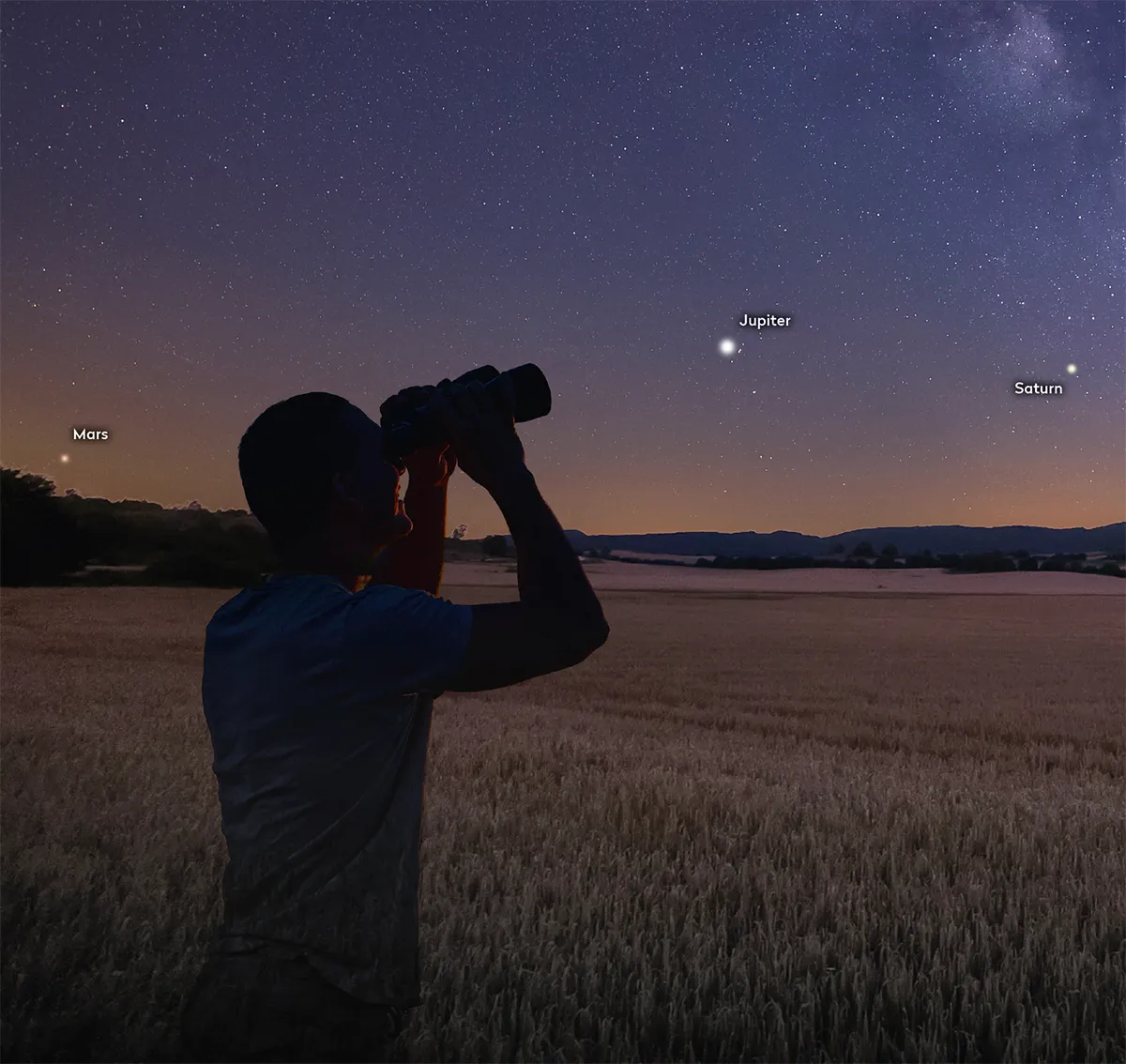
And even better news: this time it will be in the evening sky, so you won’t need to set the alarm really early to see it.
Throughout September 2022 no less than five planets – Saturn, Jupiter, Mars, Uranus and Neptune – will all be on view at once, if you look at the right time.
This month’s gathering will be taking place after dark, so all the planets involved will be either very easy to see with the naked eye or easy to find in binoculars and small telescopes.
And as an added bonus, one of the Solar System’s most famous minor planets, Vesta, will be in the same region of the sky too.
Discover our pick of the best telescopes for observing the planets.
When to see September's planet parade
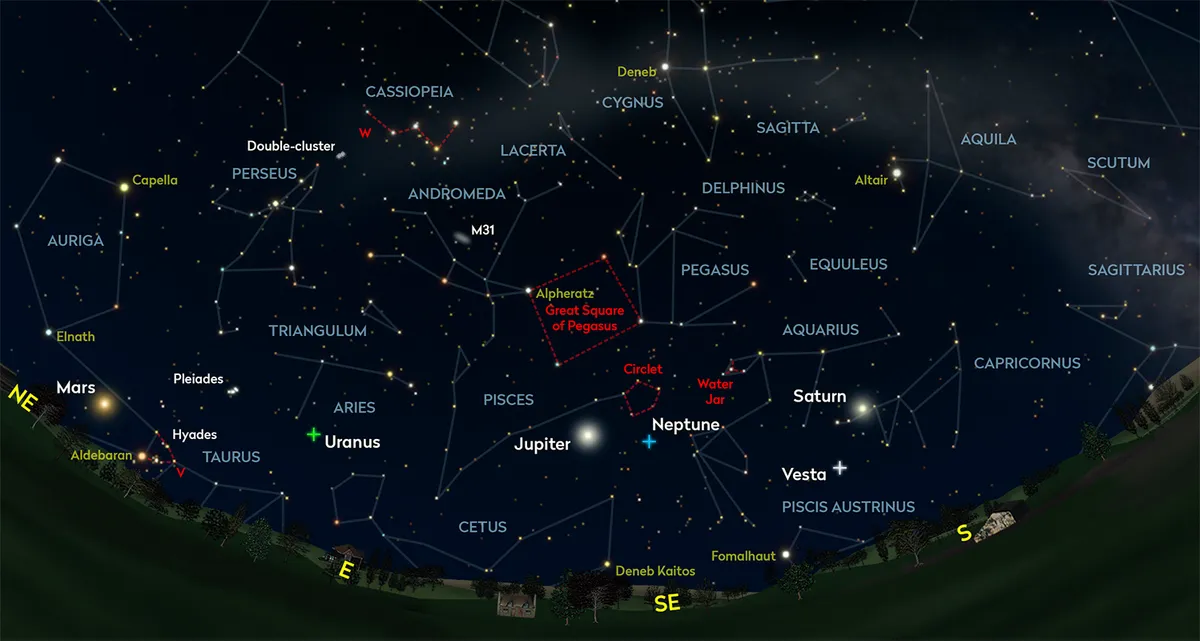
Although some of the planets will be on view soon after sunset, you won’t be able to see all of them strewn across the sky together until around 10:30pm, so if you want to show them to any space-mad youngsters, they may need to take a nap first and then go out later.
We’ll look at the view on one particular night mid-month, 18 September, as an example. But don’t worry if it’s cloudy on that night because these planets will be on view throughout September.
By 10:30pm, if you look to the southeast, a veritable parade of worlds will be stretched out before you.
The brightest of them, Jupiter, will be straight ahead of you.
To its right, 45˚ away, Saturn will be an easy naked-eye object too, also appearing starlike.
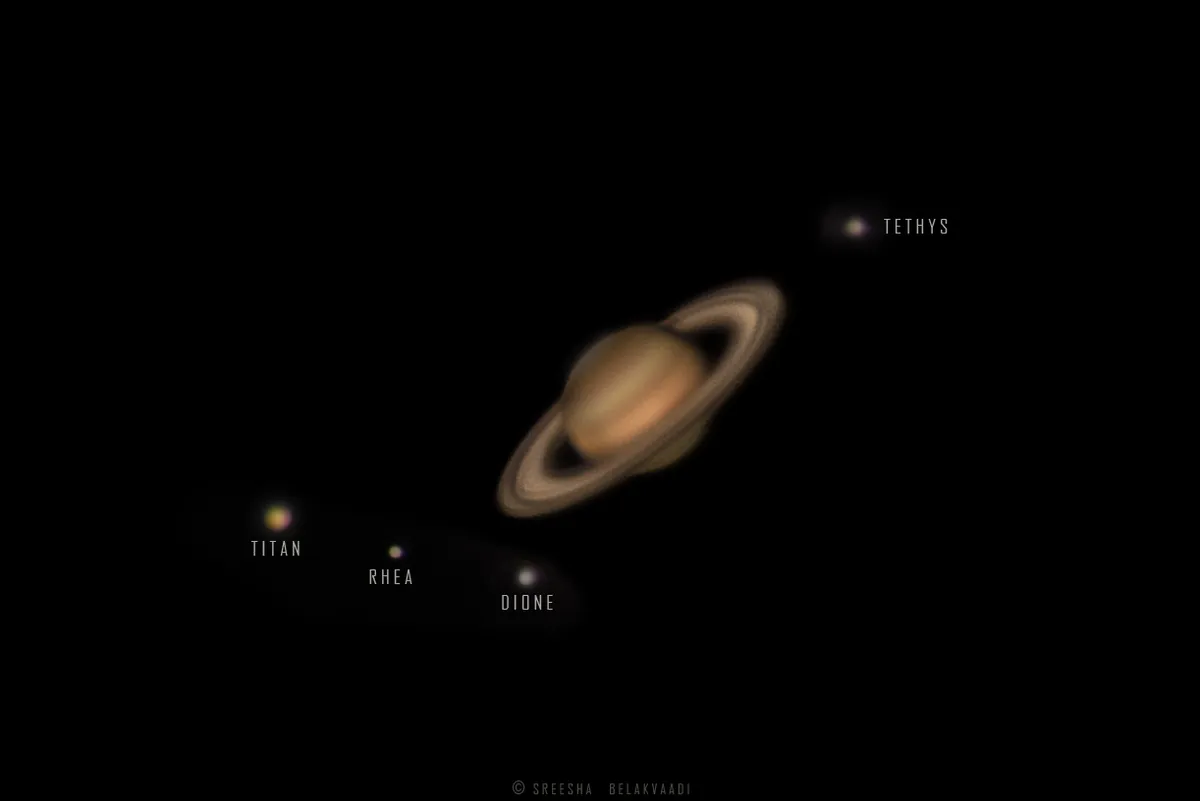
Finally for the naked-eye planets, down to Jupiter’s lower left, quite some distance away (70˚ away in fact), you’ll see Mars.
With the naked eye, September’s planet parade will be a celestial joy to behold, but to get a closer look at those brighter planets, a small telescope or even a modest pair of binoculars will make all the difference.
Let’s take a closer look at each of the naked-eye trio in turn, working from right to left, then explore how to see Uranus, Neptune and Vesta.
As always, it will help if you can get to somewhere dark, away from the bright lights of towns and cities, and allow 20–30 minutes for your eyes to dark-adapt.
So wrap up warm, have hot drinks and snacks to hand, and get ready for the planet parade.
Saturn
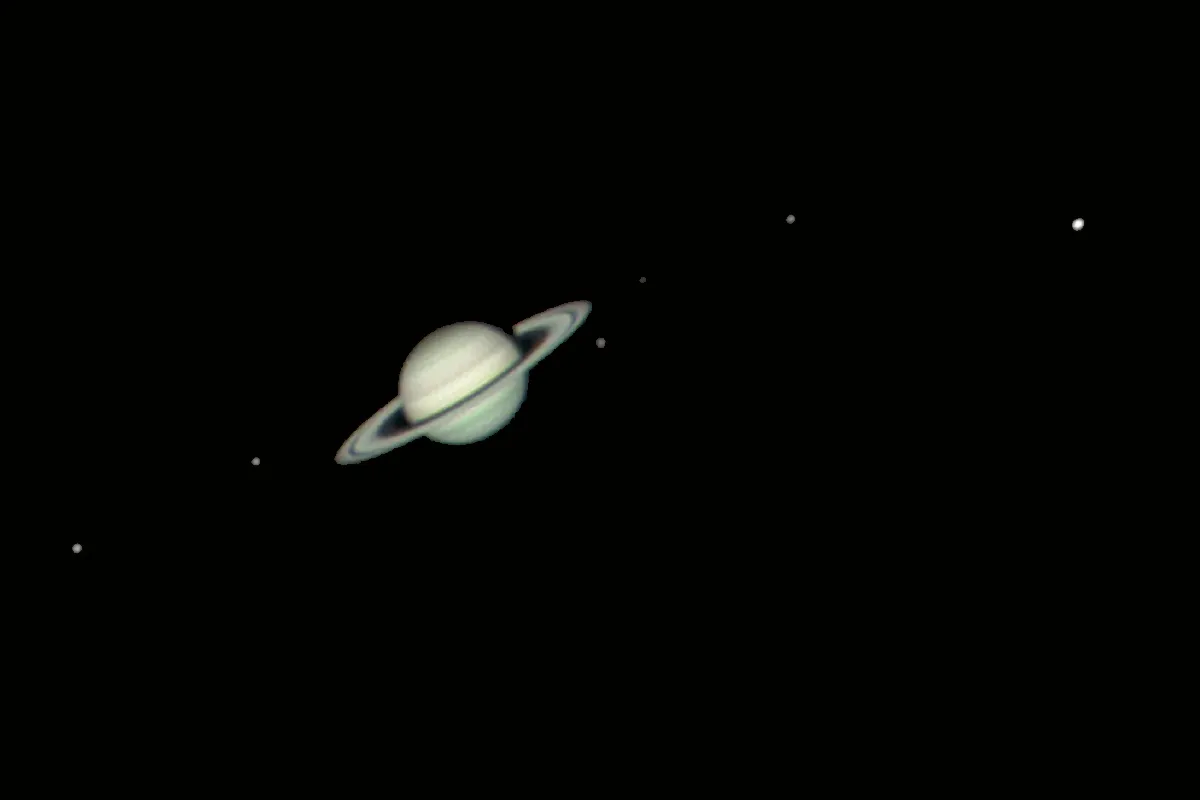
Shining at mag. 0.4, the famous ringed planet will rise an hour before sunset, but you won’t be able to see it clearly until twilight deepens.
By 10:30pm (from the centre of the UK; times will vary depending on your location) Saturn will look like a yellow-white star in Capricornus.
If you’re worried about how you’ll know which one is Saturn, don’t be: it will be easy to identify because it will be the only bright ‘star’ low in the southeast.
Having found Saturn, you’ll want to see its famous rings.
Saturn's rings are a sight reserved for telescopes or the largest and most powerful binoculars, but even a modest pair of binoculars will show you Saturn’s largest moon, Titan, which is as big as the planet Mercury.

Through binoculars Titan looks like a star shining close to Saturn.
Its position relative to Saturn changes night to night, so check where it will be using a phone app or planetarium program.
Magnified more, Saturn really comes to life. Even a small telescope using low magnification is enough to show its slightly squashed disc and its rings too, looking like a slender hoop thrown over it.
As magical as this view is – and every astronomer can’t help grinning like a Cheshire Cat whenever they recall their first view of Saturn through a telescope – you won’t be surprised to hear that the bigger the telescope you use, the better your view of Saturn will be.
A 6-inch reflector with high magnification will show you faint banding on the planet’s disc, gaps in the rings and even the shadow of the rings on Saturn itself – a view as beautiful as anything sent back by Voyager or Cassini.
Jupiter

Sitting smack in the middle of the chain of worlds at 10:30pm, Jupiter will look like
a strikingly bright blue-white star to the eye, 30˚ or so above the southeastern horizon.
You’ll have no trouble identifying it because, at mag. –2.9, there will simply be nothing else anywhere near as bright in the sky nearby at that time.
Through a pair of binoculars Jupiter will just look like a brighter star, but you will be able to see some of its family of 79 moons, looking like tiny stars shining close to it.
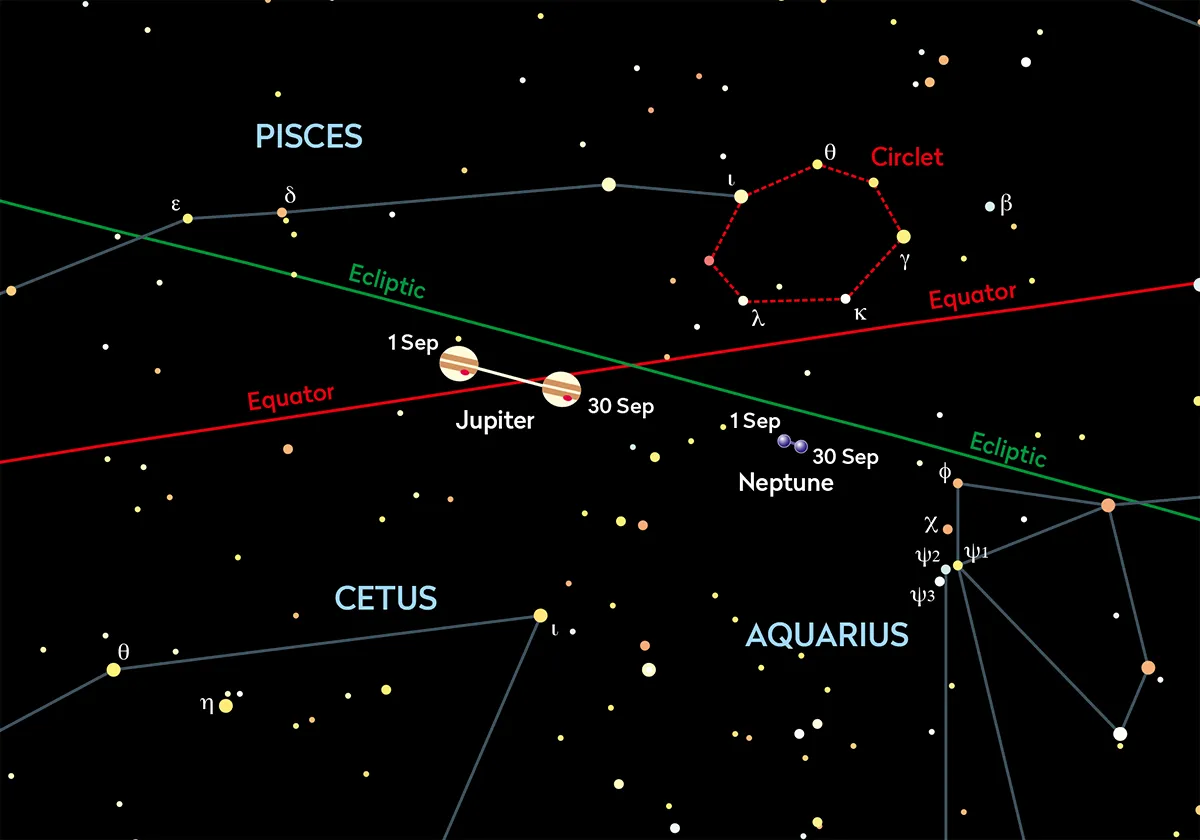
How many you see will depend on when you look. The four largest moons of Jupiter are known as the Galilean moons because they were first seen by the great astronomer Galileo when he turned his crude telescope on the night sky.
But as Galileo found, as they whirl around Jupiter they slip in and out of view, sliding in front of the disc or vanishing behind it, so you might see all four or just a couple.
Through a telescope Jupiter is a wonder. Even a small instrument will show two dark horizontal bands on its shimmering disc, and those Galilean moons will look more obvious too.
A large telescope magnifying at 100x will bring subtler cloud bands into view, and Jupiter’s famous Great Red Spot – a storm larger than Earth – will be visible too.
If you can magnify a couple of hundred times, you’ll see plumes and swirls of pastel-hued clouds on its disc, and more of its moons will be visible.
Mars
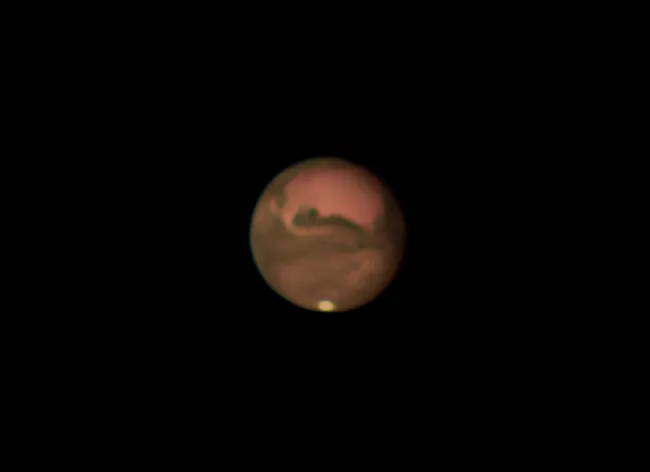
The anchor at the far western end of our celestial chain of worlds is Mars.
Like Saturn and Jupiter to its right, to the naked eye Mars will look like a ‘star’ in Taurus.
Shining at mag. –0.4 it will be obvious, but if you go out expecting the famously ‘red’ planet to blaze a vivid scarlet, you’re going to be disappointed.
Mars is actually more of a deep orange colour, like amber or one of the old Spangles boiled sweets.
If you have a pair of binoculars, they are definitely worth training on Mars.
They won’t be powerful enough to show you its disc, but they will greatly enhance its colour, making the planet appear like a gemstone in the sky.
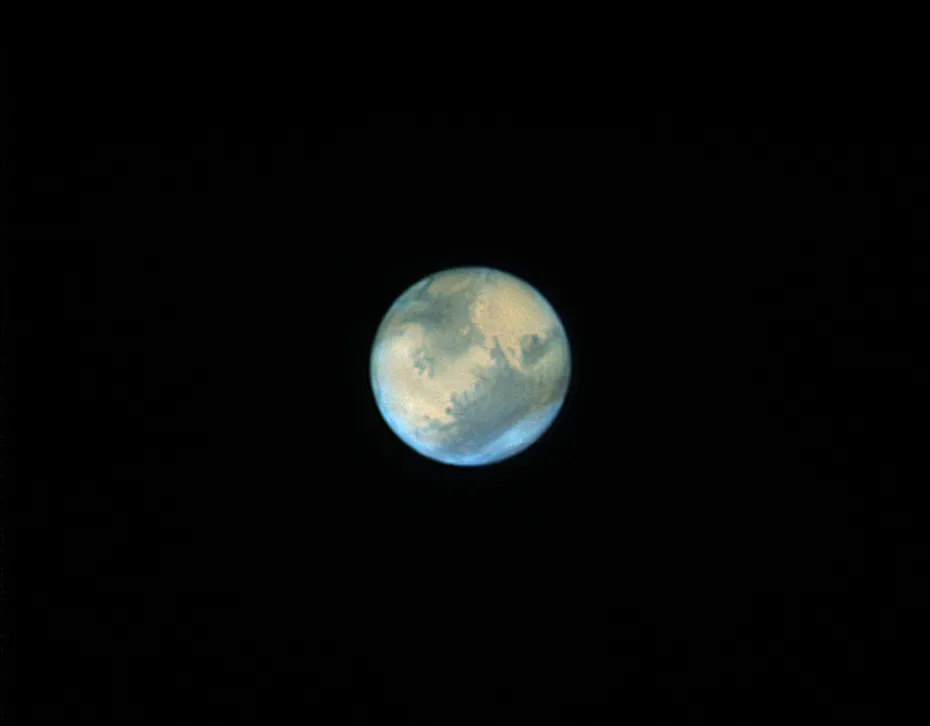
Everyone is familiar with images of Mars taken from orbit, showing its ochre disc blotted with dark areas, but if you want to see that for yourself you’ll need a large scope, like a 6-inch refractor, high powers and good seeing.
During September, Mars’s disc will only appear half as wide as Saturn and a sixth as wide as Jupiter, but you might just sneak a tantalising glimpse of its ice cap through a smaller instrument in moments when the atmosphere between you and Mars is calm and still.
This is also a good time to observe the Red Planet as we approach Mars opposition in December.
Now we’ve looked at the three naked-eye worlds, let’s go fainter…
Uranus
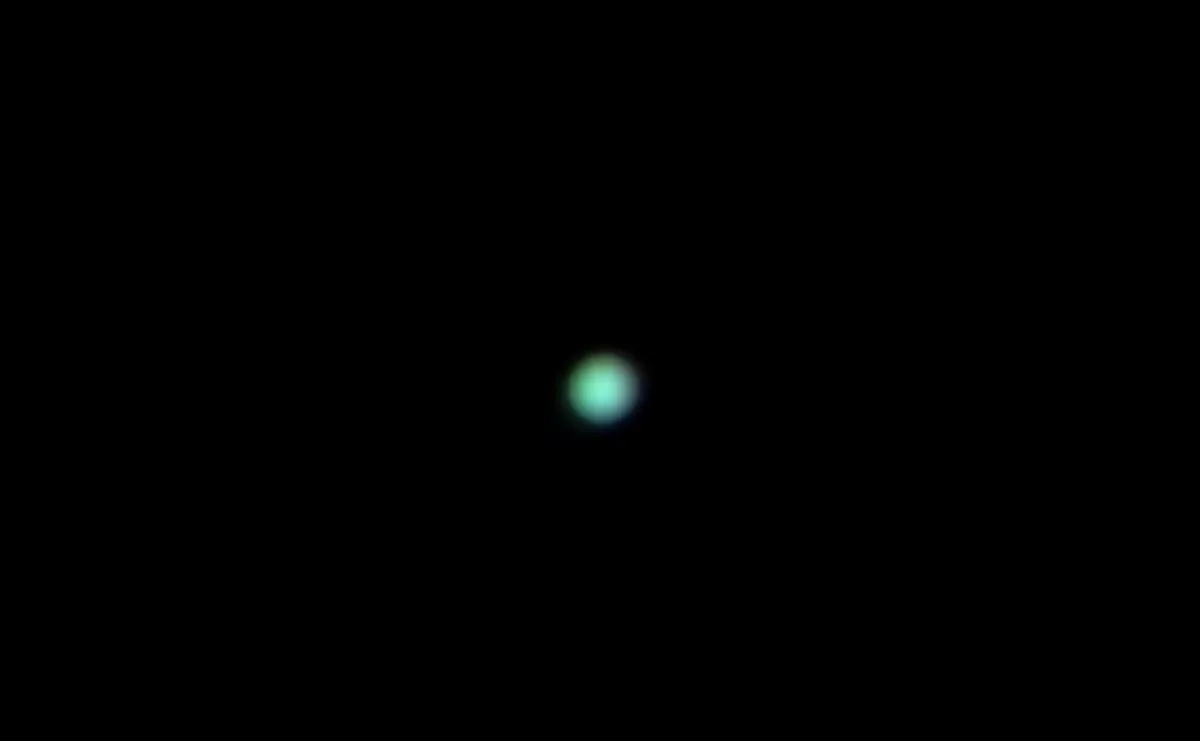
During mid-September you’ll find Uranus roughly halfway between Mars and Jupiter.
With a magnitude of 5.9 the planet will technically be a naked-eye planet, but unless you know exactly which of the hundreds of 6th-magnitude points of light in that part of the sky it is, you’ll struggle to pick it out.
Binoculars will show Uranus as a star with a subtle greenish hue, and if you have a telescope it will resolve the planet’s small, pale green disc, confirming its identity.
Again, a good stargazing app or planetarium software will help you pinpoint the planet.
Neptune
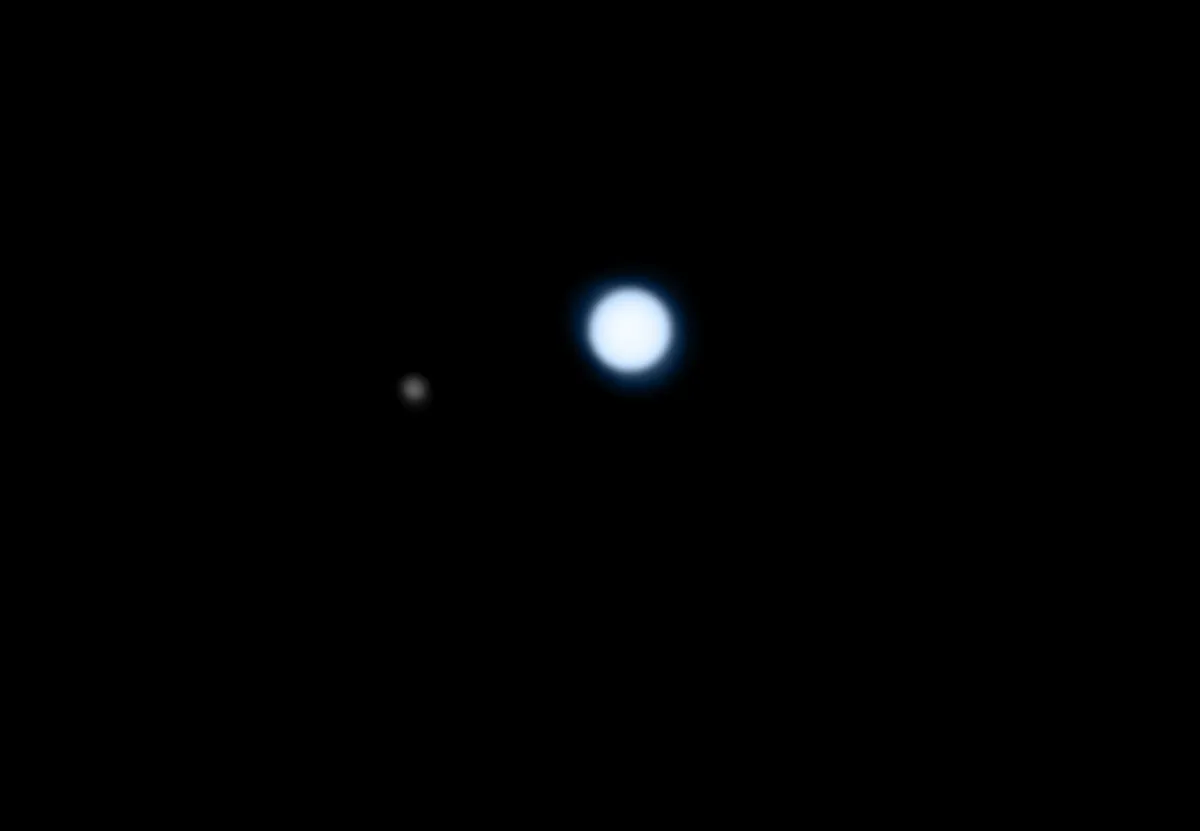
If you’ve never managed to see Neptune with your own eyes before, this will be your big chance.
During September it will be just 11˚ away from Jupiter.
However, with a magnitude of just 7.8, it is far too faint to see without assistance.
Binoculars will only show it as a faint blue-green ‘star’ lost among thousands of others of equal or even greater brightness within Aquarius.
If you want to be certain of seeing it, you’ll need a telescope like a 6-inch or larger refractor, which will show you the faraway planet’s tiny blue-green disc at high magnification.
Vesta
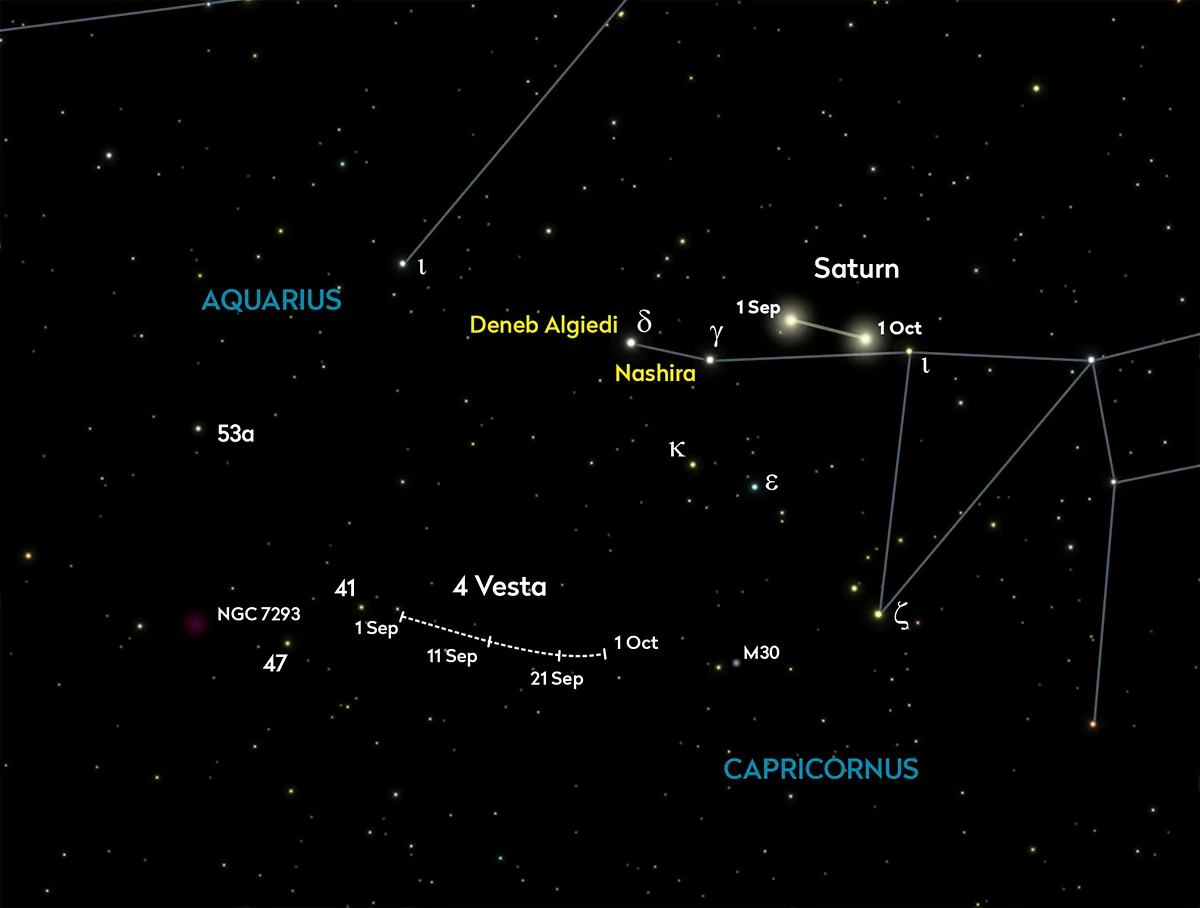
With a diameter of around 525km, Vesta is one of the largest known asteroids.
Discovered in March 1807 by the German astronomer Heinrich Wilhelm Matthias Olbers, it was named after Vesta, the virgin goddess of home and hearth from Roman mythology.
Vesta is the brightest asteroid visible from Earth, regularly visible to the naked eye as a 5th-magnitude star.
This month it be will a magnitude-and-a-half fainter than that, so you’ll need a pair of binoculars to see it, and no matter how big a telescope you point at it, it will still just look like a point of light.
Its brightness or appearance won’t change much during the whole of September, so you can seek it out at any time.
In fact, it might make a fun challenge to take several photos of its part of the sky, a week or so apart, and look to identify which ‘dot’ to the lower left of Saturn has moved during
the month.
Keep up to date via our guide to the comets and asteroids in the sky tonight.
What else is in the night sky in September?
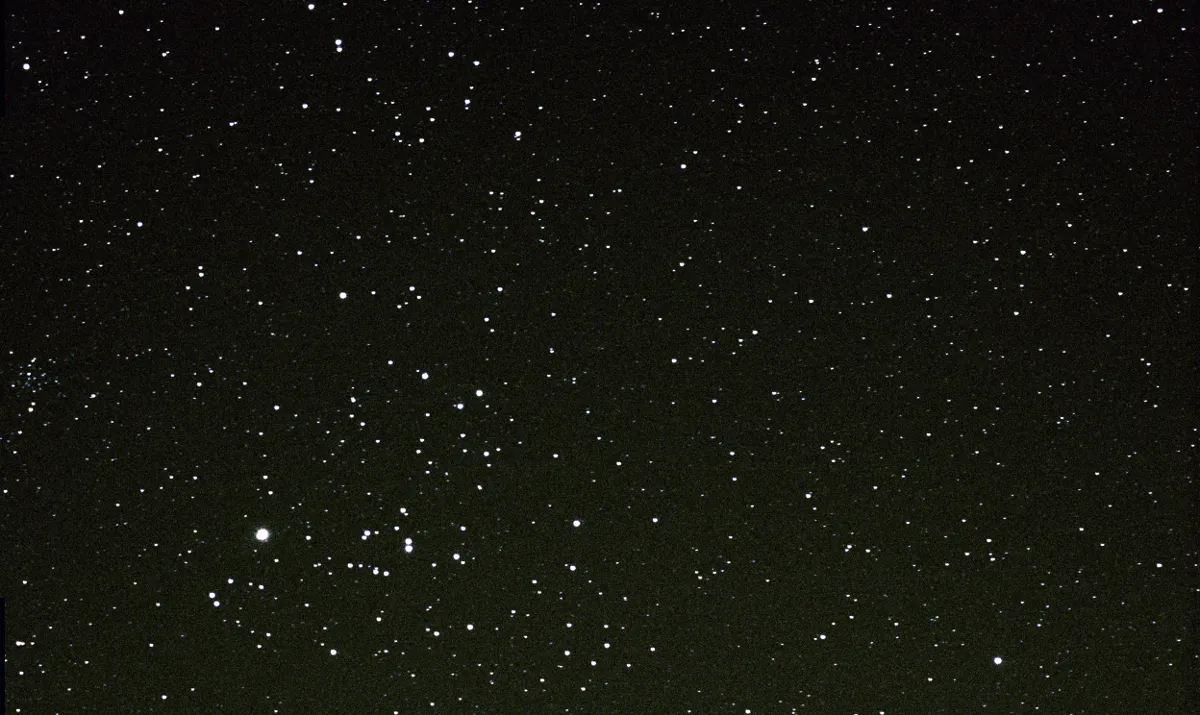
When you’ve identified all the planets and explored them with your binoculars or telescope, take a while to look at some of the other objects on view in the September sky.
Mars will lie close to two famous star clusters.
To its right you’ll see what looks like a ‘V’ of stars lying on its side. This is the Hyades star cluster, which represents the horns of Taurus, the Bull.
The bright orange star at the end of the lower horn is the red giant Aldebaran, but it’s not actually a member of the cluster, it just lies in the same direction.

Above the Hyades you’ll see a small knot of blue stars, around the same size as your thumbnail held out at arm’s length: the famous Pleiades or Seven Sisters open star cluster.
Binoculars will show there are a lot more than just seven stars in this group, which is shaped a little like a mini Big Dipper.
Other objects worth tracking down after you’ve toured the planets are:
M31, the Andromeda Galaxy

Over two million lightyears away, this is the most distant object the naked eye can see.
Find out more with our guide on how to see the Andromeda Galaxy.
The Double Cluster

These glittering star clusters sit so close together they fit in the same binocular and small telescope field of view.
Find out more with our guide to the Double Cluster.
The Milky Way
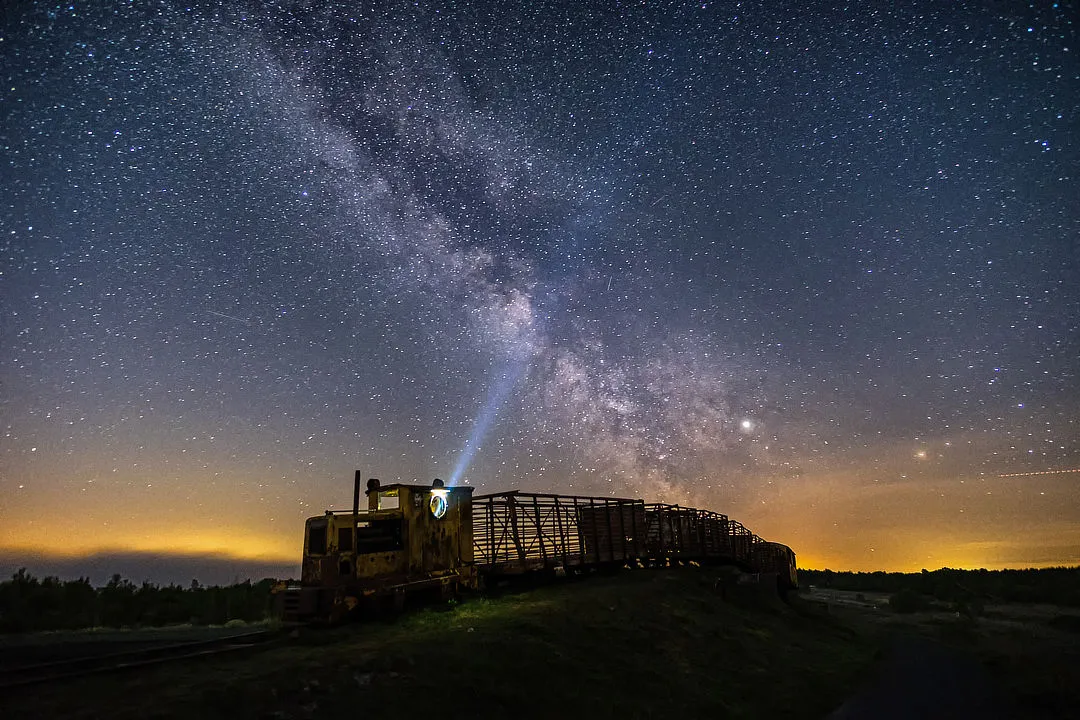
The dark evenings of September are perfect for getting away from light pollution and enjoying the beautiful sight of the star-frothed Milky Way airbrushed across the sky, with the most concentrated area to be found above the southwest horizon.
Find out more with our guide on how to see the Milky Way.
This guide originally appeared in the September 2022 issue of BBC Sky at Night Magazine.
